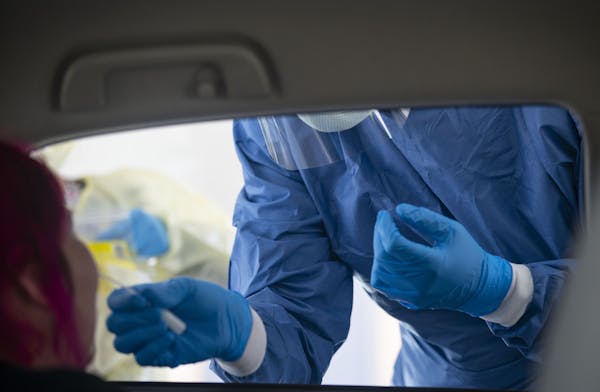Hospitalizations due to COVID-19 increased, albeit slightly, for a second day in a row in Minnesota, where health officials will be closely watching for any signs of a surge in the pandemic amid reductions in social distancing requirements and the reopening of retail and other business.
The Minnesota Department of Health on Wednesday reported that 550 people with COVID-19 were admitted to hospitals in the state, including 212 patients who needed intensive care. The state's hospital numbers had leveled off over the past week, but then increased from a total of 488 on Monday and 545 Tuesday.
The state also reported another 29 COVID-19 related deaths, bringing the total to 777. That is the second-highest death toll in a single day so far for Minnesota. Another 645 lab-confirmed cases brought the state to 17,670 cases of COVID-19, an infectious disease caused by a novel coronavirus. The number of health care workers who suffered COVID-19 infections surpassed 2,000 as well.
State health officials will be closely monitoring hospital usage amid the pandemic, especially the number of patients admitted to ICU beds and placed on ventilators due to severe breathing problems caused by their infections.
As of Wednesday, the state's COVID-19 pandemic response page listed 1,011 of 1,241 available ICU beds in use by patients with COVID-19 or unrelated medical conditions. Hospitals have another 1,292 ICU beds that could be readied within 72 hours, though.
Only 580 of 1,443 available ventilators were in use — and the state has at least another 1,395 that could be readied if COVID-19 cases surge.
Minnesota spent 51 days under a statewide stay-at-home order, designed to reduce face-to-face contact and virus transmission, until it was lifted Monday. The state still recommends social distancing measures such as staying 6 feet apart and wearing cloth masks; prohibits any gatherings of 10 or more people; and has kept bars, restaurants and large public gathering places closed until at least June 1.
Disease modeling by state health and University of Minnesota researchers has predicted a surge in cases that will peak in late June following the end of the stay-at-home order, which they estimated reduce opportunities for disease transmission by 55%.
Concerns remains about whether that surge will outstrip hospital supplies of beds and also personal protective equipment (PPE) such as masks and gowns that keep doctors and nurses from being infected by the COVID-19 patients they treat. Nurses represented by the Minnesota Nurses Association planned a march to the Capitol Wednesday night to call for the state and hospitals to provide more safety and PPE.

Want to share info with the Star Tribune? How to do it securely

'Safe recovery sites' would offer syringes, naloxone and more to people using drugs. The plan could be in peril.
New Minnesota GOP leaders seek peace with party's anti-establishment wing

Who is Republican Lisa Demuth, Minnesota's first House speaker of color?

